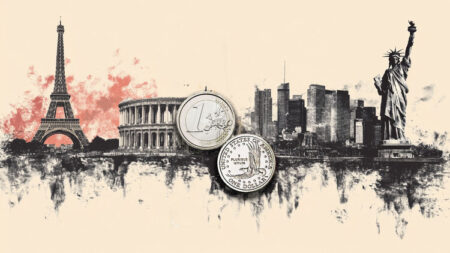- NZD/USD rises to 0.5955 in Friday’s Asian session, up 0.46% on the day.
- China posted better-than-expected Q2 growth, supporting the China-proxy Kiwi.
- US Retail Sales rose by 0.6% MoM in June, beating the estimates.
The NZD/USD pair attracts some buyers to around 0.5955 during the Asian trading hours on Friday. The New Zealand Dollar (NZD) strengthens against the Greenback as China’s second-quarter (Q2) growth beats estimates. The preliminary reading of the University of Michigan Consumer Sentiment will be in the spotlight later on Friday, followed by Building Permits and Housing Starts.
China posted better-than-expected Q2 Gross Domestic Product (GDP) in the face of US President Donald Trump’s tariffs. China’s economy expanded by 5.2% YoY in Q2 versus 5.4% prior, the National Bureau of Statistics showed. This reading came in stronger than the estimation of 5.1%. This encouraging Chinese economic report could underpin the China-proxy China, as China is a major trading partner of New Zealand.
Nonetheless, robust US Retail Sales data could lift the US Dollar (USD) and act as a headwind for the pair. The US Retail Sales rose by 0.6% MoM in June, compared to -0.9% in May. This figure came in below the market consensus of 0.1%. On an annual basis, Retail Sales climbed 3.9% in June versus 3.3% prior.
Traders expect the US Federal Reserve (Fed) will leave its benchmark overnight interest rate unchanged in the 4.25%-4.50% range at its July policy meeting due to the tariff uncertainty triggered by Trump. Financial markets are now pricing in a September starting date for rate cuts, and Fed officials penciled in two easings later this year, according to Reuters.
New Zealand Dollar FAQs
The New Zealand Dollar (NZD), also known as the Kiwi, is a well-known traded currency among investors. Its value is broadly determined by the health of the New Zealand economy and the country’s central bank policy. Still, there are some unique particularities that also can make NZD move. The performance of the Chinese economy tends to move the Kiwi because China is New Zealand’s biggest trading partner. Bad news for the Chinese economy likely means less New Zealand exports to the country, hitting the economy and thus its currency. Another factor moving NZD is dairy prices as the dairy industry is New Zealand’s main export. High dairy prices boost export income, contributing positively to the economy and thus to the NZD.
The Reserve Bank of New Zealand (RBNZ) aims to achieve and maintain an inflation rate between 1% and 3% over the medium term, with a focus to keep it near the 2% mid-point. To this end, the bank sets an appropriate level of interest rates. When inflation is too high, the RBNZ will increase interest rates to cool the economy, but the move will also make bond yields higher, increasing investors’ appeal to invest in the country and thus boosting NZD. On the contrary, lower interest rates tend to weaken NZD. The so-called rate differential, or how rates in New Zealand are or are expected to be compared to the ones set by the US Federal Reserve, can also play a key role in moving the NZD/USD pair.
Macroeconomic data releases in New Zealand are key to assess the state of the economy and can impact the New Zealand Dollar’s (NZD) valuation. A strong economy, based on high economic growth, low unemployment and high confidence is good for NZD. High economic growth attracts foreign investment and may encourage the Reserve Bank of New Zealand to increase interest rates, if this economic strength comes together with elevated inflation. Conversely, if economic data is weak, NZD is likely to depreciate.
The New Zealand Dollar (NZD) tends to strengthen during risk-on periods, or when investors perceive that broader market risks are low and are optimistic about growth. This tends to lead to a more favorable outlook for commodities and so-called ‘commodity currencies’ such as the Kiwi. Conversely, NZD tends to weaken at times of market turbulence or economic uncertainty as investors tend to sell higher-risk assets and flee to the more-stable safe havens.
Read the full article here
















